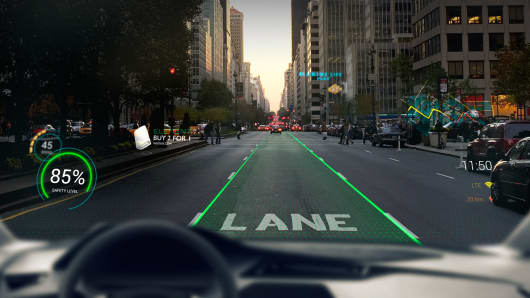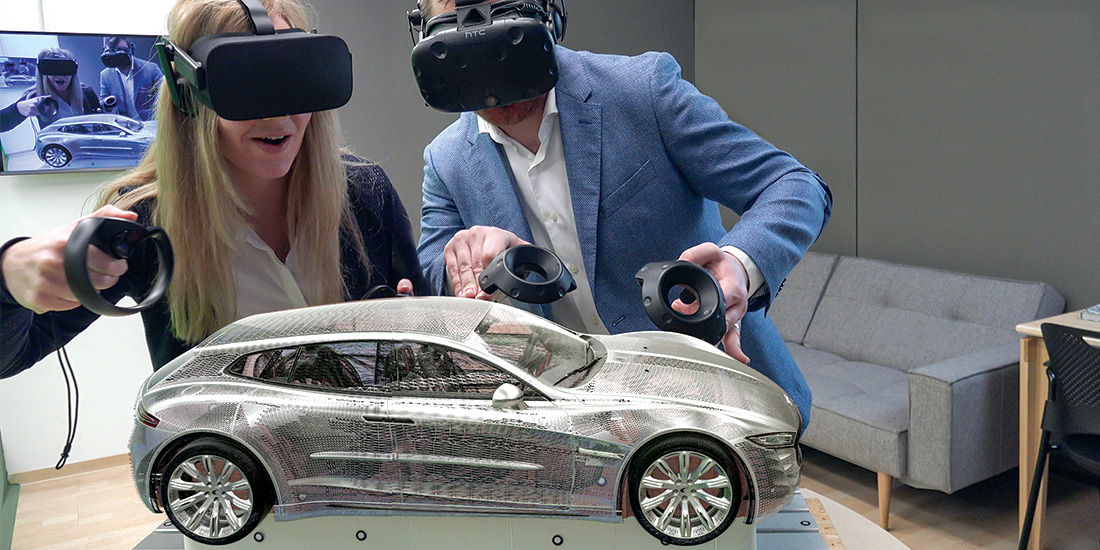Augmented reality will transform city life — from venturebeat.com by Michael Park
Excerpts:
I’ve interviewed three AR entrepreneurs who explain three key ways that AR is set to transform urban living.
- The real world will be indexed
- Commuting will be smarter and safer
- Language will be less of a barrier
Virtual Reality Devices – Where They Are Now and Where They’re Going — from iqsdirectory.com
Excerpts:
The questions now are:
- What are the actual VR devices available ?
- Are they reasonably priced?
- What do they do?
- What are they going to do?
We try to answer those questions [here in this article].
…
In this early stage, the big question becomes, “What’s next?”.
- Integration of non-VR devices with VR users
- Move away from needing a top-notch PC (or any PC)
- Controllers will be your hands
Alibaba-backed augmented reality start-up makes driving look like a video game — from cnbc.com by Robert Ferris
- WayRay makes augmented reality hardware and software for cars and drivers.
- The company won a start-up competition at the Los Angeles Auto Show.
- WayRay has also received an investment from Alibaba.

WayRay’s augmented reality driving system makes a car’s windshield look like a video game. The Swiss-based company that makes augmented reality for cars won the grand prize in a start-up competition at the Los Angeles Auto Show on Tuesday. WayRay makes a small device called Navion, which projects a virtual dashboard onto a driver’s windshield. The software can display information on speed, time of day, or even arrows and other graphics that can help the driver navigate, avoid hazards, and warn of dangers ahead, such as pedestrians. WayRay says that by displaying information directly on the windshield, the system allows drivers to stay better focused on the road. The display might appear similar to what a player would see on a screen in many video games. But the system also notifies the driver of potential points of interest along a route such as restaurants or other businesses.
HTC’s VR arts program brings exhibits to your home — from engadget.com by Jon Fingas
Vive Arts helps creators produce and share work in VR.
Exerpt:
Virtual reality is arguably a good medium for art: it not only enables creativity that just isn’t possible if you stick to physical objects, it allows you to share pieces that would be difficult to appreciate staring at an ordinary computer screen. And HTC knows it. The company is launching Vive Arts, a “multi-million dollar” program that helps museums and other institutions fund, develop and share art in VR. And yes, this means apps you can use at home… including one that’s right around the corner.
VR at the Tate Modern’s Modigliani exhibition is no gimmick — from engadget.com by Jamie Rigg
‘The Ochre Atelier’ experience is an authentic addition.
Excerpt:
There are no room-scale sensors or controllers, because The Ochre Atelier, as the experience is called, is designed to be accessible to everyone regardless of computing expertise. And at roughly 6-7 minutes long, it’s also bite-size enough that hopefully every visitor to the exhibition can take a turn. Its length and complexity don’t make it any less immersive though. The experience itself is, superficially, a tour of Modigliani’s last studio space in Paris: a small, thin rectangular room a few floors above street level.
In all, it took five months to digitally re-create the space. A wealth of research went into The Ochre Atelier, from 3D mapping the actual room — the building is now a bed-and-breakfast — to looking at pictures and combing through first-person accounts of Modigliani’s friends and colleagues at the time. The developers at Preloaded took all this and built a historically accurate re-creation of what the studio would’ve looked like. You teleport around this space a few times, seeing it from different angles and getting more insight into the artist at each stop. Look at a few obvious “more info” icons from each perspective and you’ll hear narrated the words of those closest to Modigliani at the time, alongside some analyses from experts at the Tate.
Real human holograms for augmented, virtual and mixed reality — from 8i.com; with thanks to Lisa Dawley for her Tweet on this
Create, distribute and experience volumetric video of real people that look and feel as if they’re in the same room.
Next-Gen Virtual Reality Will Let You Create From Scratch—Right Inside VR — from autodesk.com by Marcello Sgambelluri
The architecture, engineering and construction (AEC) industry is about to undergo a radical shift in its workflow. In the near future, designers and engineers will be able to create buildings and cities, in real time, in virtual reality (VR).
Excerpt:
What’s Coming: Creation
Still, these examples only scratch the surface of VR’s potential in AEC. The next big opportunity for designers and engineers will move beyond visualization to actually creating structures and products from scratch in VR. Imagine VR for Revit: What if you could put on an eye-tracking headset and, with the movement of your hands and wrists, grab a footing, scale a model, lay it out, push it, spin it, and change its shape?









